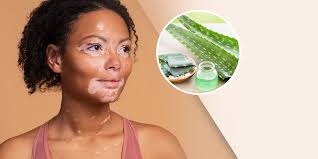Differential
diagnosis of autism spectrum disorder
The core features of autism are difficulty in language and communication, difficulties in social interaction, restricted or repetitive behaviours, difficulties in multiple domains. For language and communication disorders they suffer a condition called echolalia or repetition of words and phrases that they hear or have heard. People may develop some language skills, but not at a normal level. For example, they may develop a strong vocabulary for a particular interest, but may not understand what they read. They may not respond to the speech of others or to their own names. They may speak in a high-pitched or sing-song voice, or use robot-like speech. They may also use stock phrases to start a conversation. They may use challenging behaviours instead of words or gestures to communicate. These language difficulties are often misunderstood for language disorders, speech sound disorders, social communication disorders, selective mutism, expressive language disorder, mixed expressive disorders.
Regarding
the difficulties in social interaction, They may have difficulty communicating
with others, and may repeat words they don’t understand. They may have
difficulty understanding social cues and non-verbal communication. They may
avoid eye contact during social interactions. They may have difficulty
initiating and maintaining conversations, and responding to others attempts to
interact. They may have sensory needs that make it difficult to focus on
conversations, or make social situations overwhelming, they may find it
difficult to socialize in groups. They may prefer structure and routine, and
may find unstructured activities anxiety provoking, they may appear to be not paying
attention to people around them, or to resent commands or actions. This can be
misunderstood for attention defecit-hyperactivity disorder, anxiety disorders,
particularly social anxiety disorders, major depptressive disorders, major depressive
disorders, personality disorders ,social phobia.
Regarding restricted
or repetitive behaviours , One of the hallmark features of an autism spectrum disorder is
the presence of restrictive and repetitive behaviours (RRBs), interests, and
activities. Individuals may engage in stereotyped and repetitive motor
movements (e.g., hand flapping or lining up items) or speech (e.g., echolalia).
They may have an insistence on sameness, such as needing to take the same route
to school every day or requiring that activities be completed in exactly the
same order each time. RRBs can be problematic when they interfere with the
individual’s ability to engage in other activities (e.g., academics or leisure)
and when they negatively impact social relationships. In addition, when some
individuals are blocked from engaging in repetitive behaviour or if a change in
routine is required, they may feel anxiety and engage in more severe problem
behaviours, such as aggression, to gain access to the ritual or to discourage
others from changing the routine. This can be often misunderstood for
stereo typic movement disorder, obsessive compulsive disorder, tic disorders
including torette syndrome.
Regarding
difficulties in multiple domains intellectual disabilities, global
developmental delay, reactive attachment disorder, childhood onset
schizophrenia, traumatic brain injury, neuro behavioural disorder associated with
prenatal alcohol exposure, genetic or metabolic syndromes.










